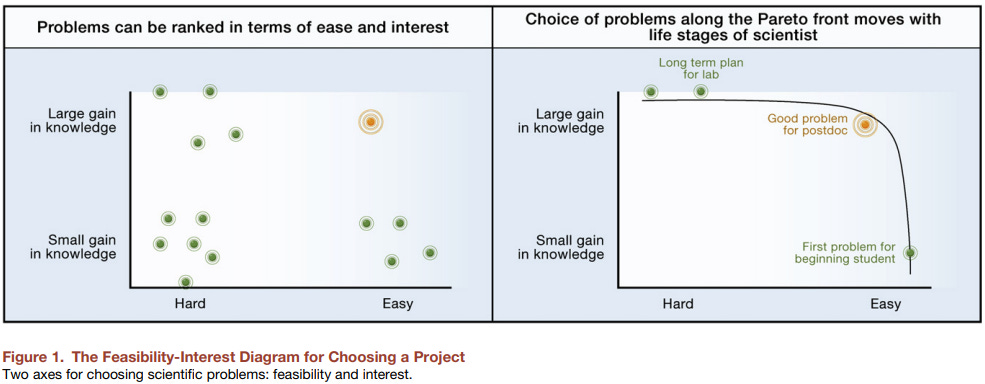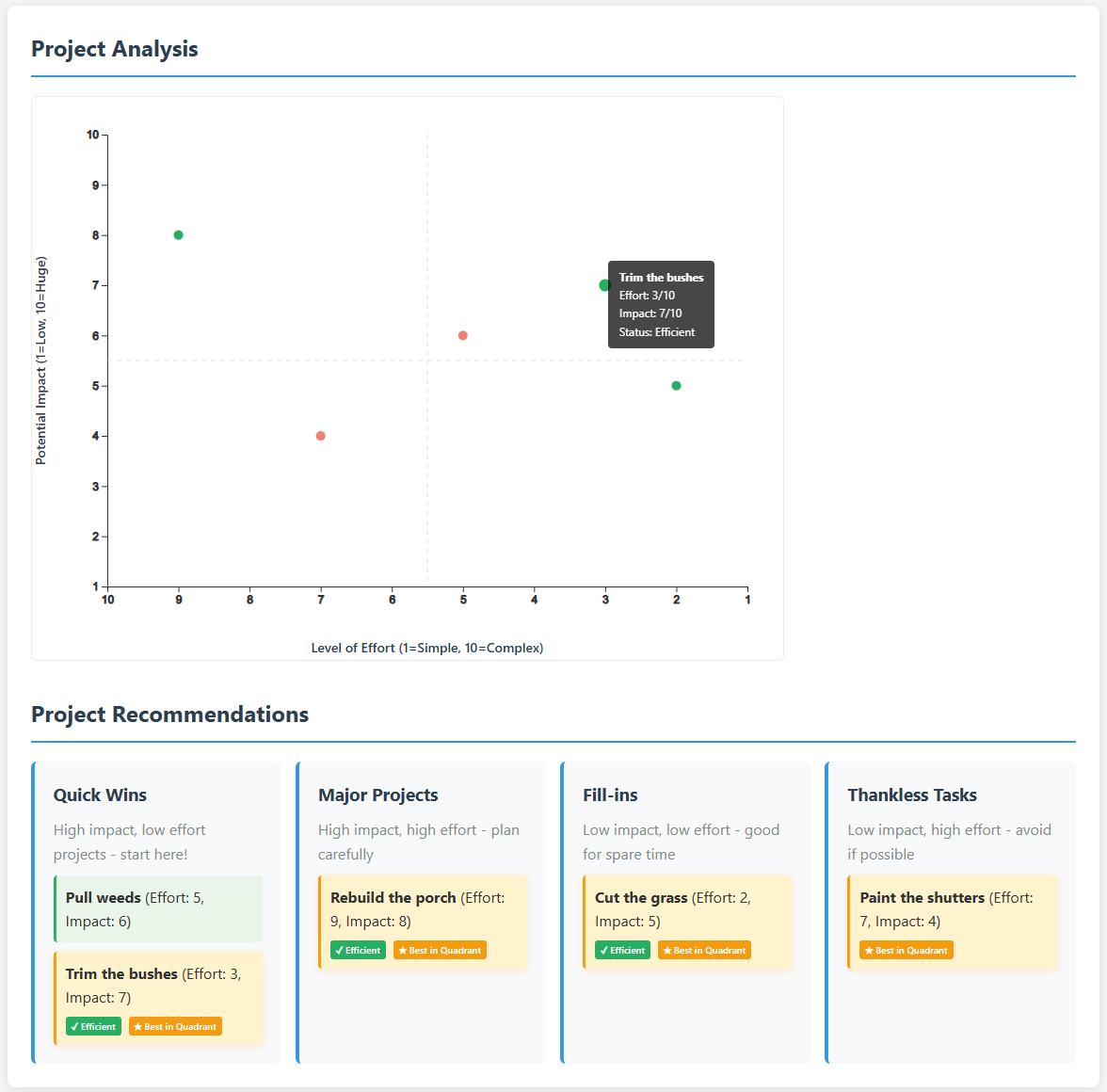Episode 17 of the Night Science podcast is a conversation with Uri Alon. It’s worth listening to the entire episode (and many others) if you’re curious about science and research in general, but one topic in this episode stood out to me.
Itai, Martin and Uri discussed the concept of Pareto efficiency and how Uri recommends scientists use the Pareto front principle of optimization theory to help them decide which problems to focus on. Uri thoroughly describes the approach in this paper, but I’ll try to give a concise overview here and suggest how I think engineers might benefit from adoption.
In short, plot your potential projects along two axis - Potential Impact and Level of Effort / Complexity. Once you’ve finished plotting your options, eliminate any projects for which there are other projects with better ratings on both axis.
Next, consider the quadrants your projects inhabit:
Time Fillers - Low Impact, Low Effort/Complexity
Thankless Struggles - Low Impact, High Effort/Complexity
Quick Wins - High Impact, Low Effort/Complexity
Major Endeavors - High Impact, High Effort/Complexity
Depending on your situation (time constraints, growth goals, workload, etc.), you might choose to focus on a specific quadrant (likely something other than Low Impact, High Effort/Complexity unless you’re a glutton for struggle).
If you don’t have much time to dedicate to the project and want results soon, you’ll focus on Low Effort/Complexity with the Highest Impact possible. On the other hand, if you’re longing for a meaty challenge that’ll generate headlines if successful, you’d focus on High Impact, High Effort/Complexity.
This intuitive approach could be leveraged by Software Engineers (or teams of them) deciding how best to invest their time and attention. An engineer early in their career might focus on Low Effort/Complexity as they practice delivering solutions independently. A more senior engineer looking to build a track record for promotion might want to choose amongst a variety of High Impact, High Effort/Complexity projects.
To encourage folks to play with this approach I put together this rudimentary app (in less than 5 minutes using Claude Code). Enter your projects with their ratings and then click Analyze Projects to see your scatter plot, quadrant summaries and recommendations of Pareto Efficient choices.



